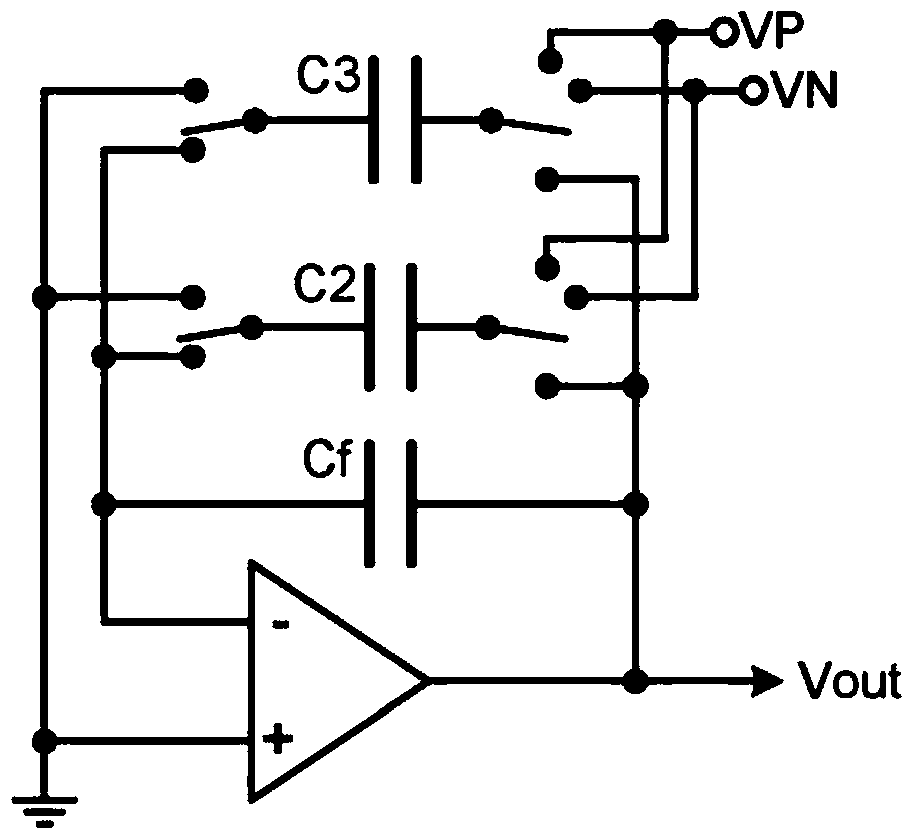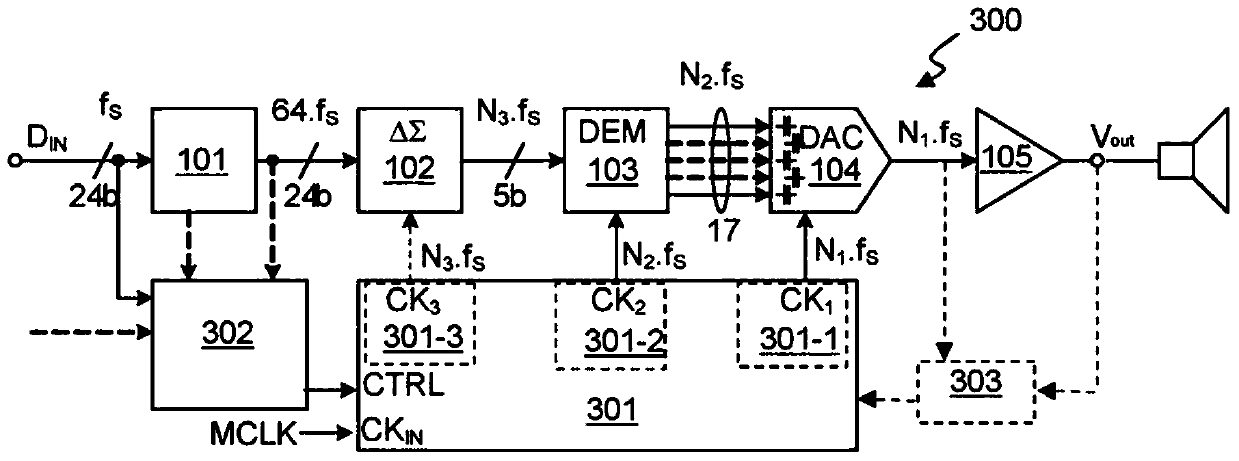Digital/Analog Conversion
A technology of analog conversion and analog converter, which is applied in the directions of digital-to-analog converter, analog conversion, analog/digital conversion, etc., and can solve problems such as the limitation of the maximum oversampling ratio
- Summary
- Abstract
- Description
- Claims
- Application Information
AI Technical Summary
Problems solved by technology
Method used
Image
Examples
Embodiment Construction
[0046] In an embodiment of the invention, the digital-to-analog conversion circuit includes: a digital-to-analog converter (DAC) capable of operating at multiple clock rates; and a first clock controller for The amplitude controls the clock rate of the DAC. During operation, the first clock controller may change the clock of the DAC to change the noise characteristics of the conversion circuit. The first clock controller may vary the DAC clock rate such that the first signal magnitude produces a first DAC clock rate and the higher second signal magnitude produces a second, slower DAC clock rate.
[0047] Operating the conversion circuit at a faster clock rate has the advantage that the noise component can be spread over a wider frequency band and thus reduces the noise component in the frequency band of interest (usually the audio frequency band). However, because the DAC elements have less time to stabilize at faster clock rates, there are many practical limitations in the m...
PUM
 Login to View More
Login to View More Abstract
Description
Claims
Application Information
 Login to View More
Login to View More - R&D
- Intellectual Property
- Life Sciences
- Materials
- Tech Scout
- Unparalleled Data Quality
- Higher Quality Content
- 60% Fewer Hallucinations
Browse by: Latest US Patents, China's latest patents, Technical Efficacy Thesaurus, Application Domain, Technology Topic, Popular Technical Reports.
© 2025 PatSnap. All rights reserved.Legal|Privacy policy|Modern Slavery Act Transparency Statement|Sitemap|About US| Contact US: help@patsnap.com



